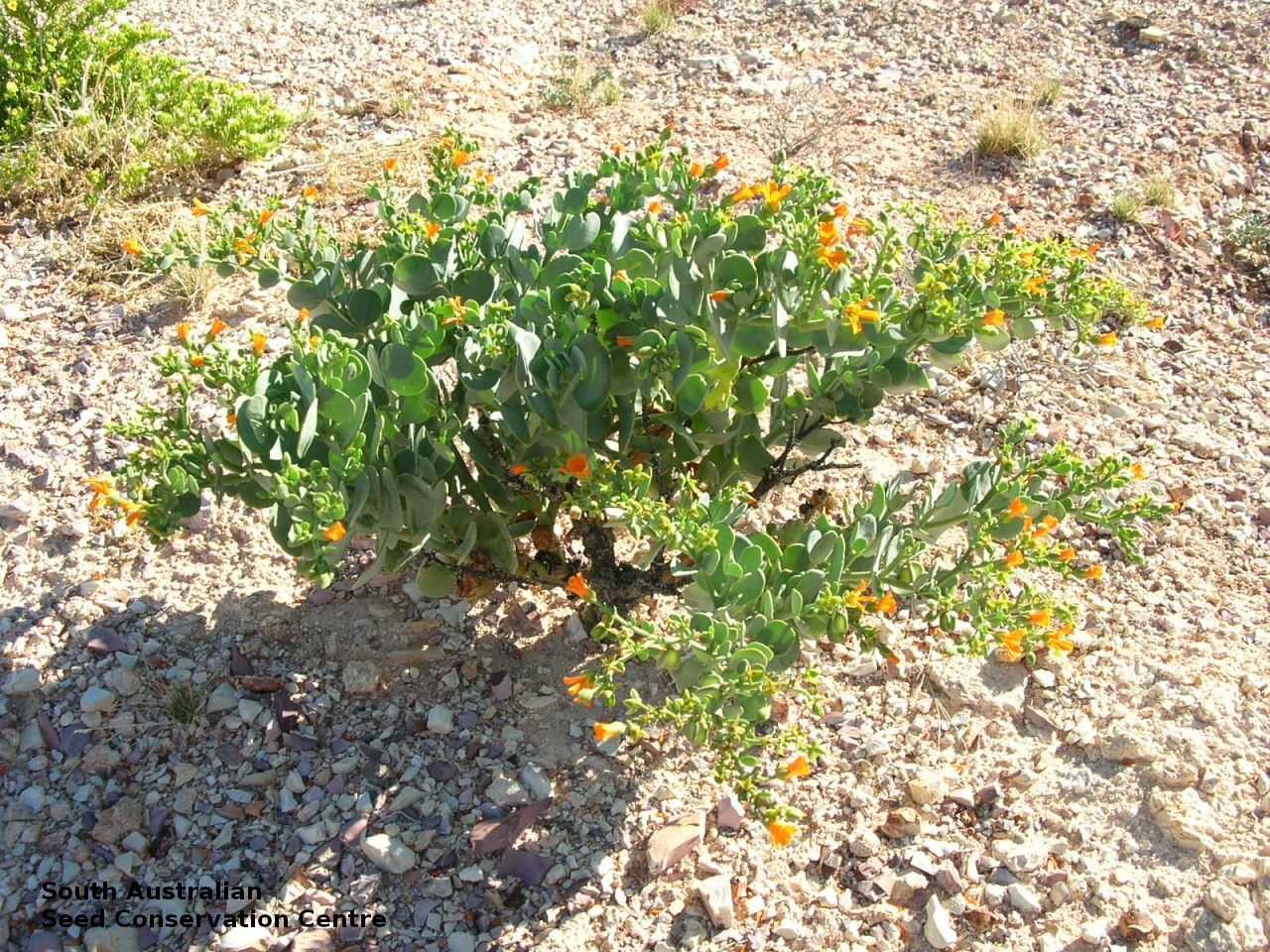
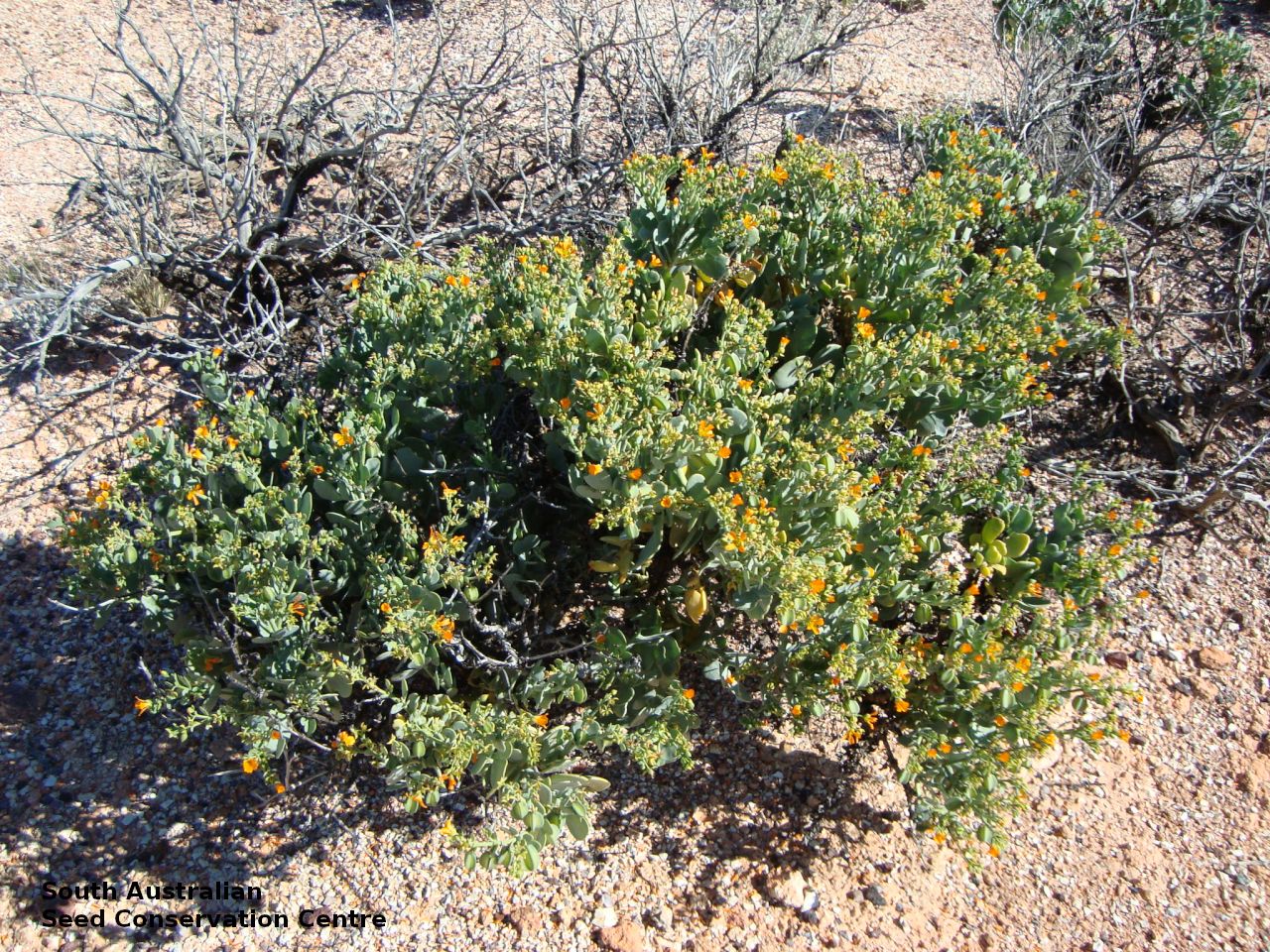
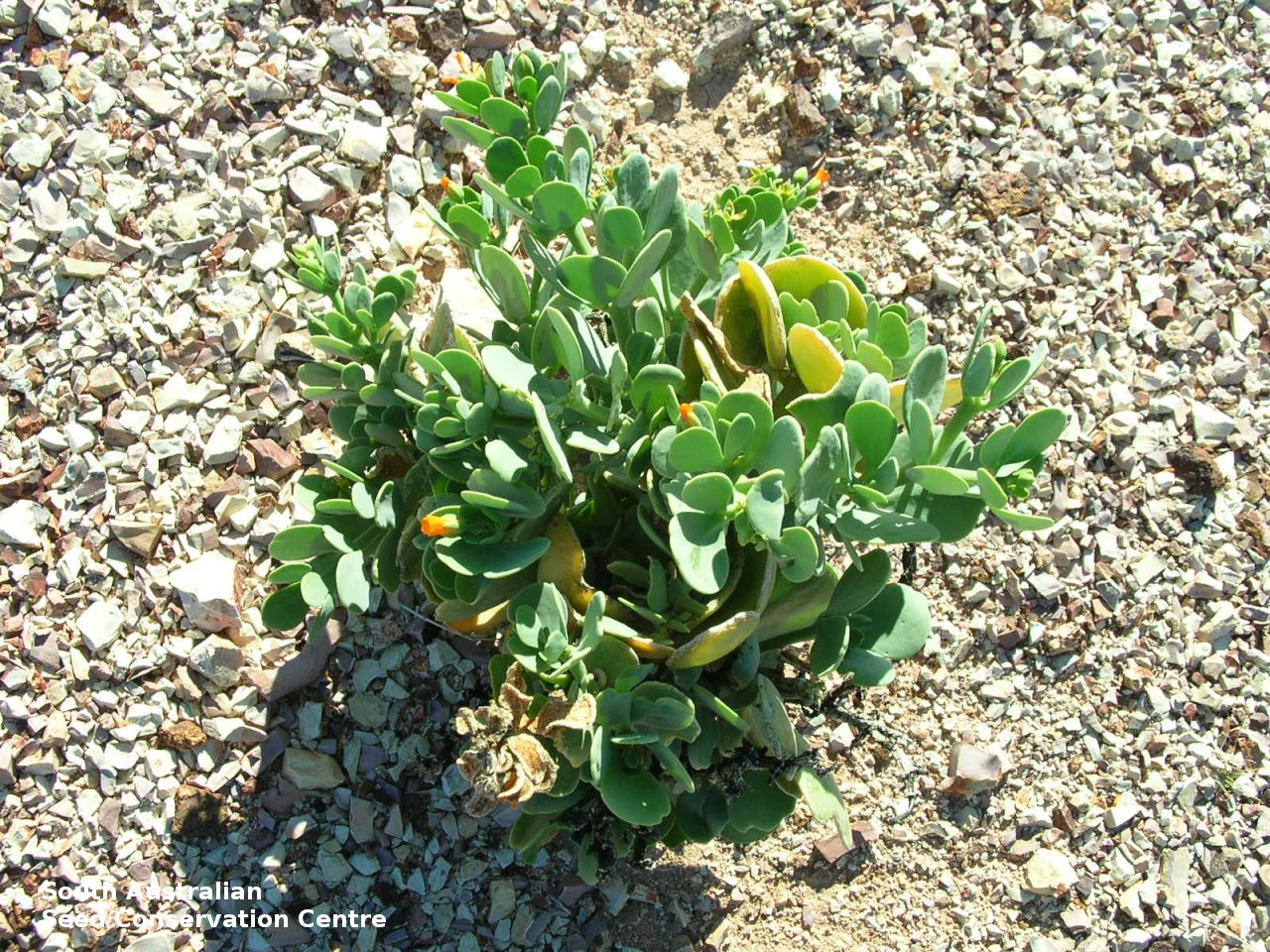
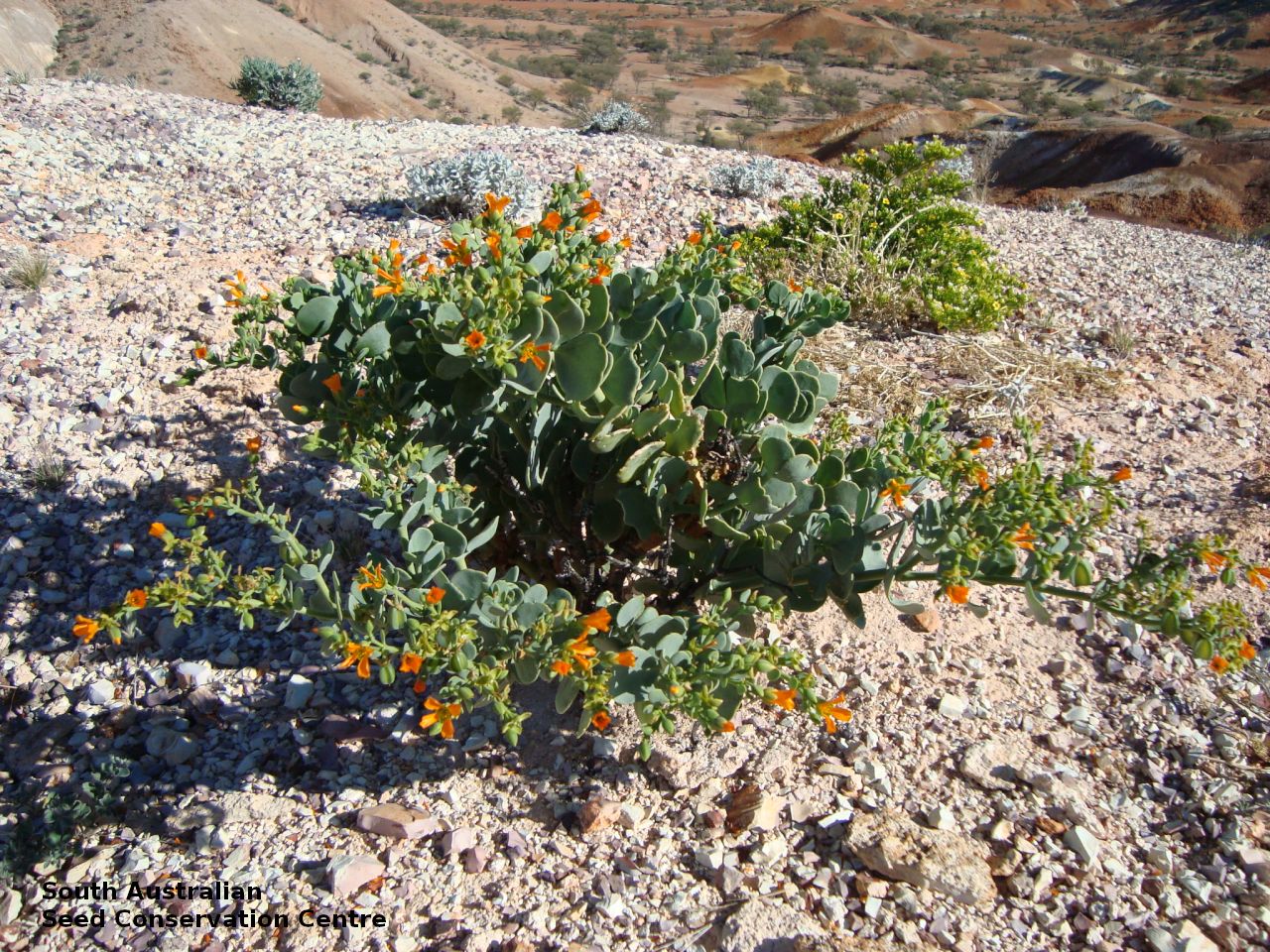
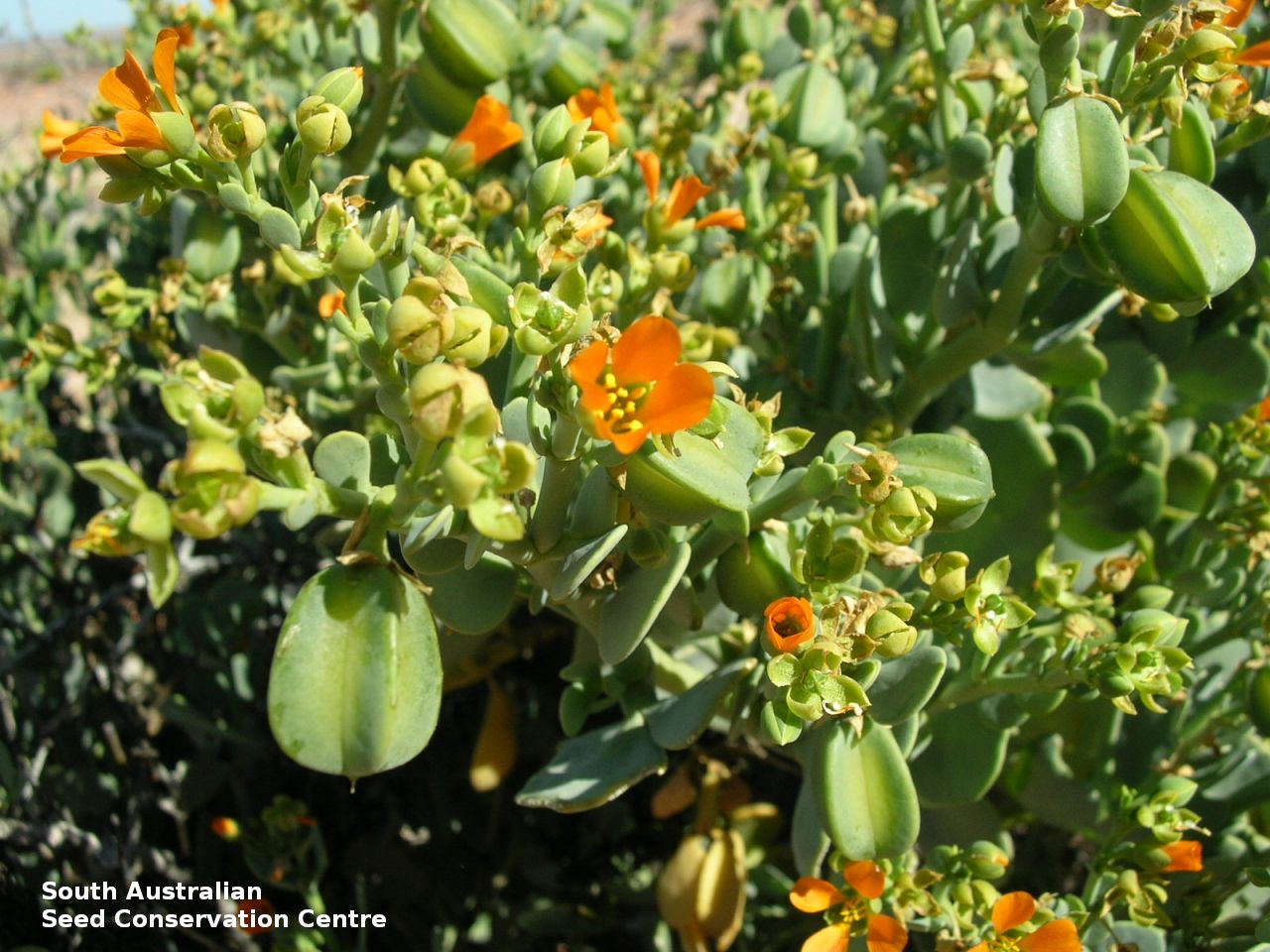
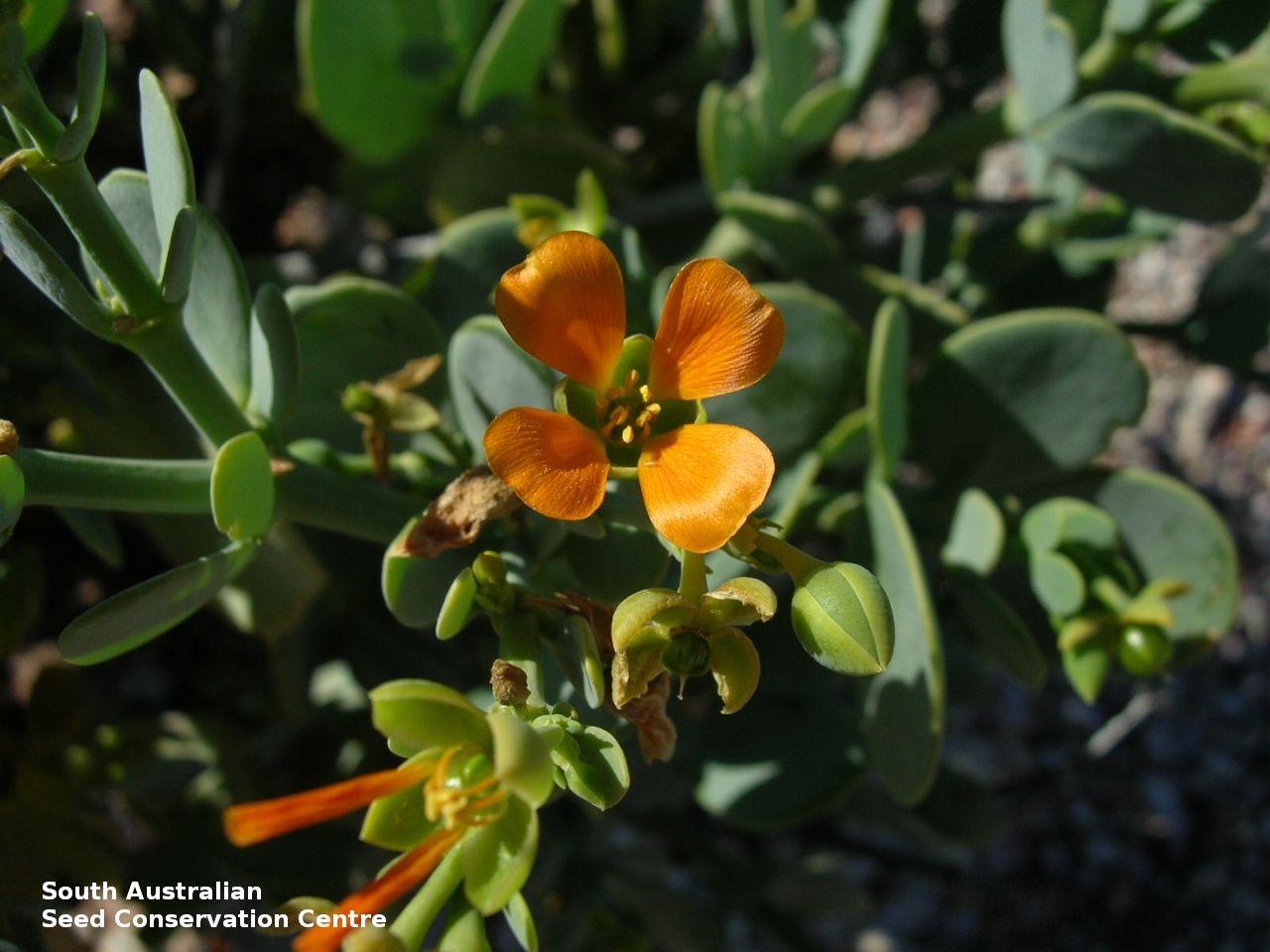
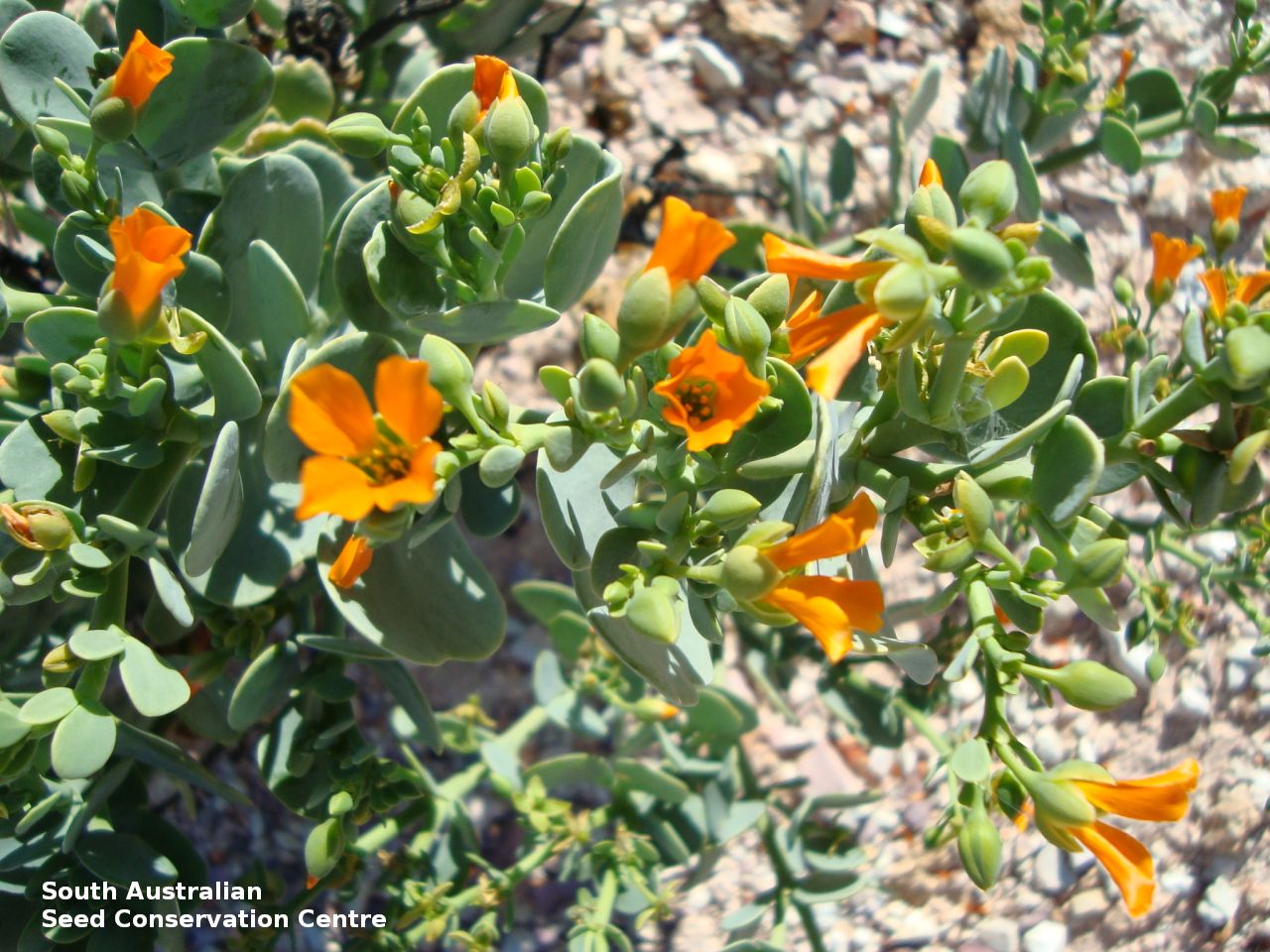
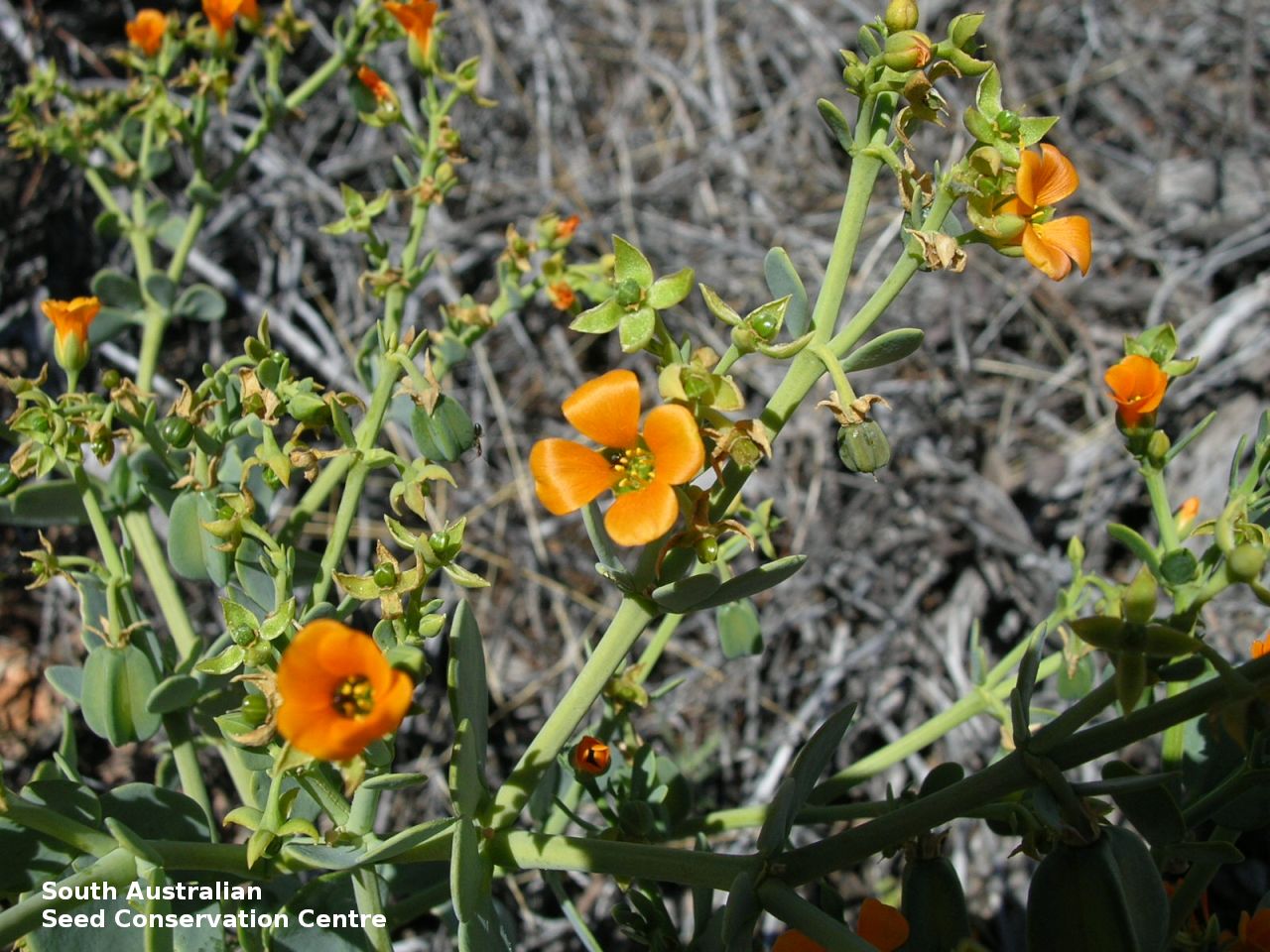
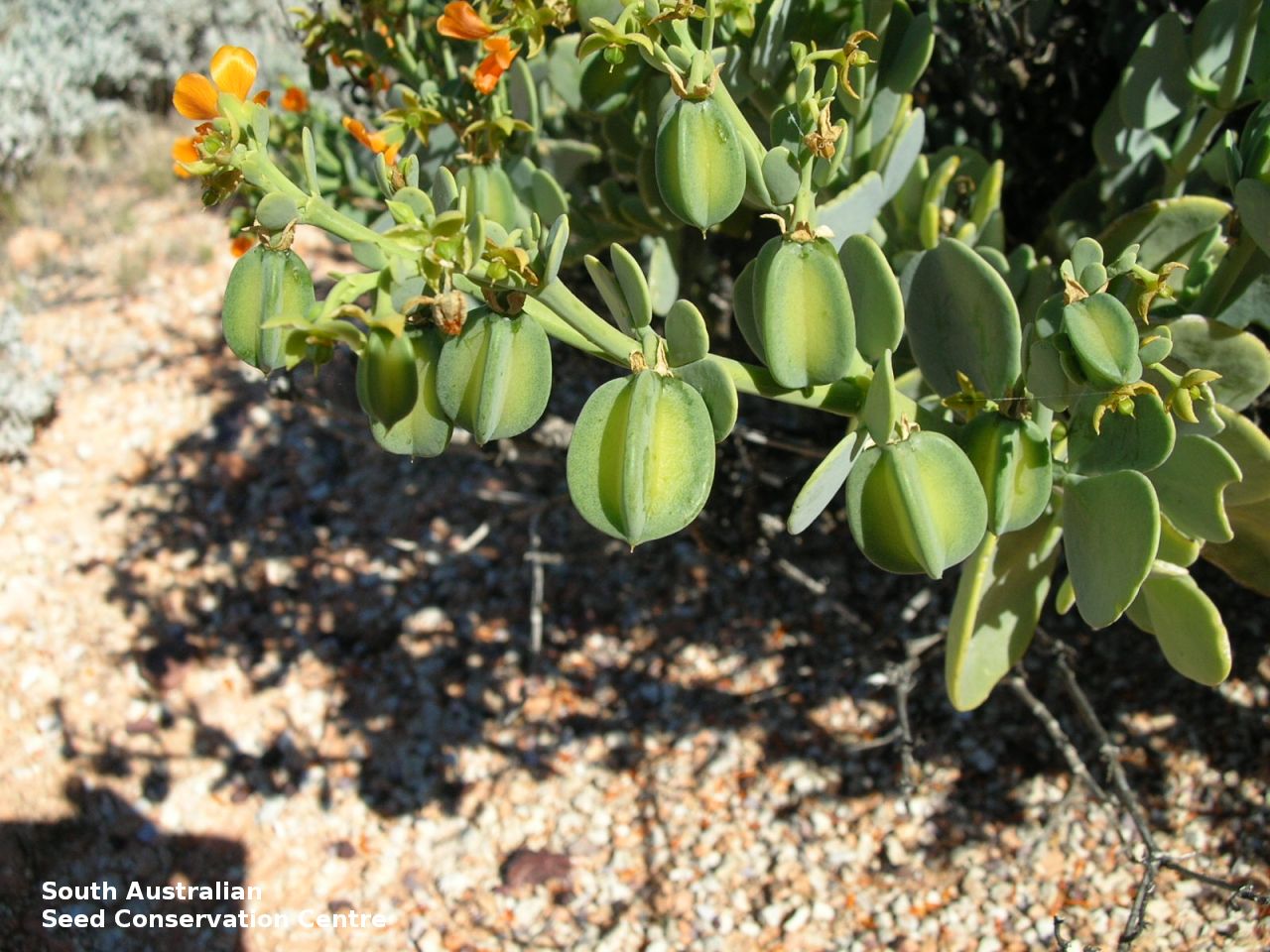
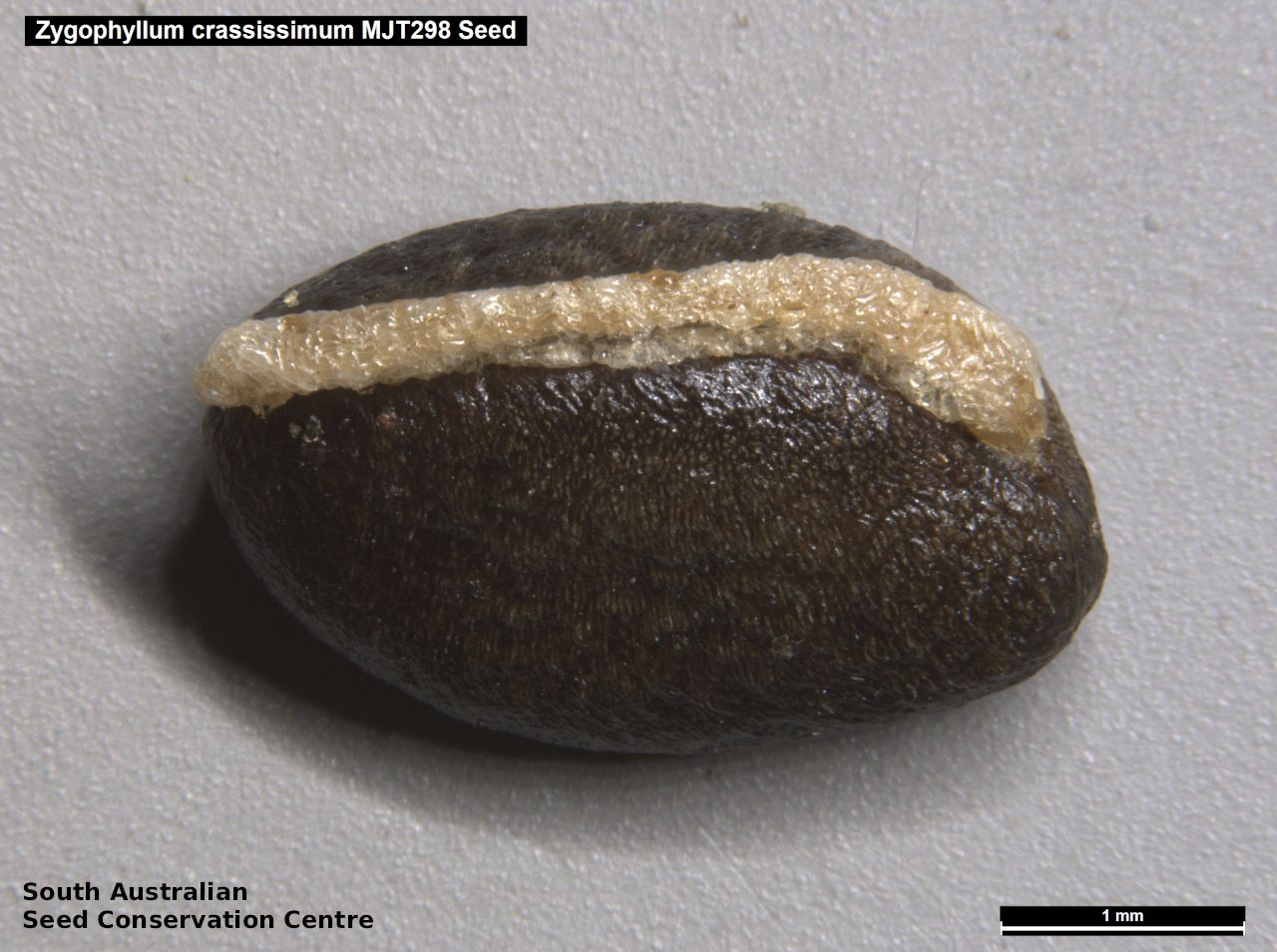
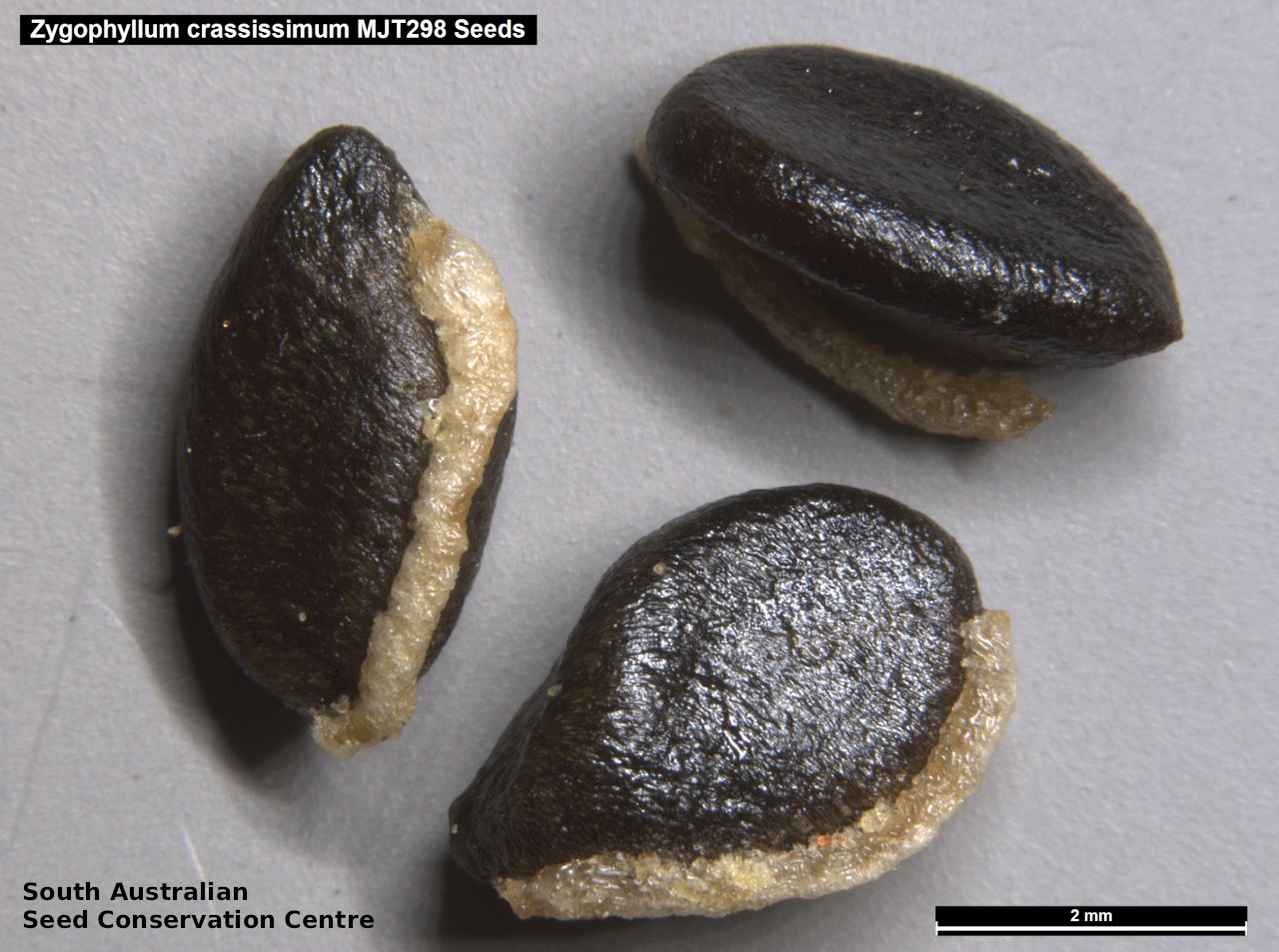
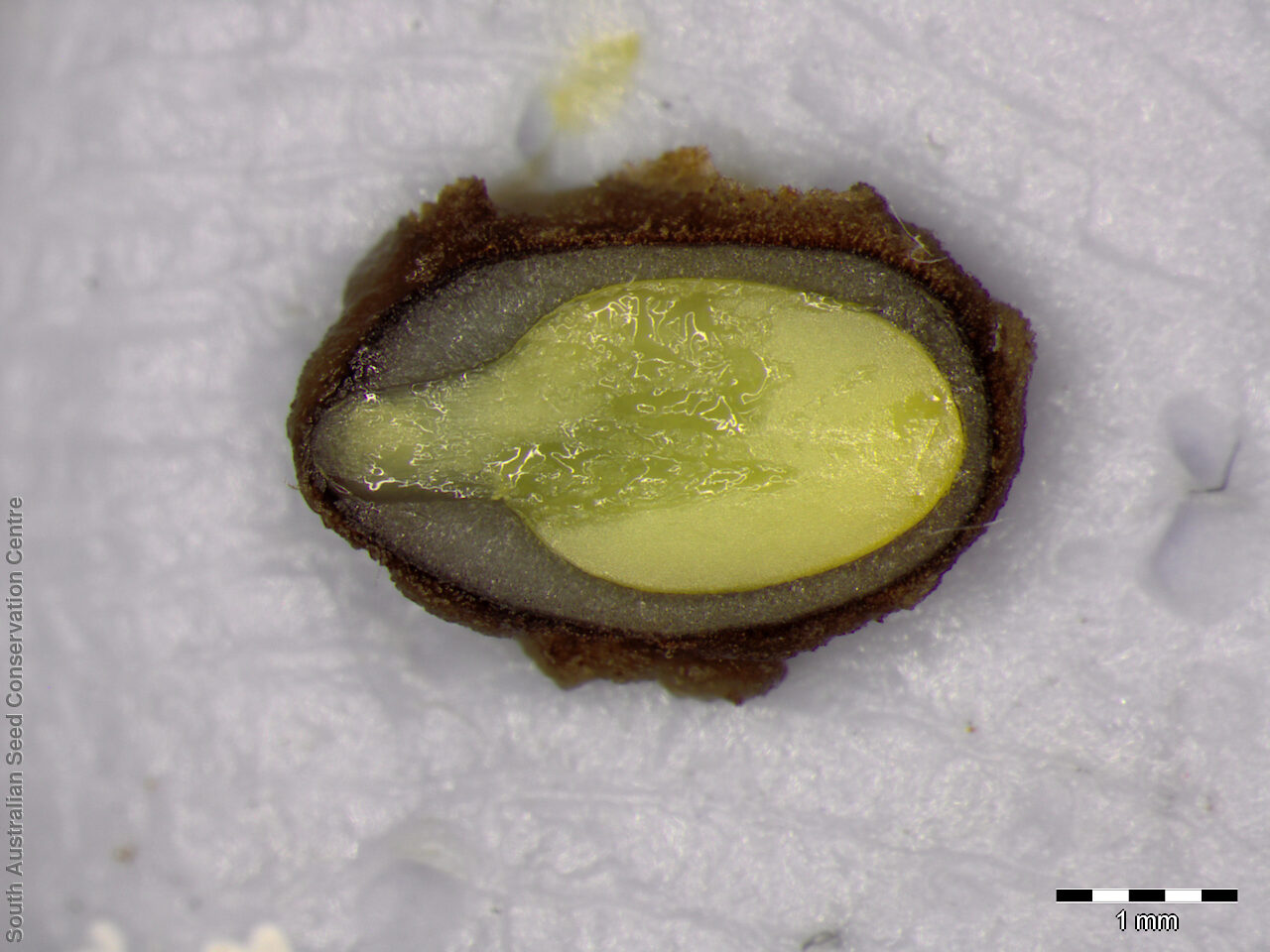
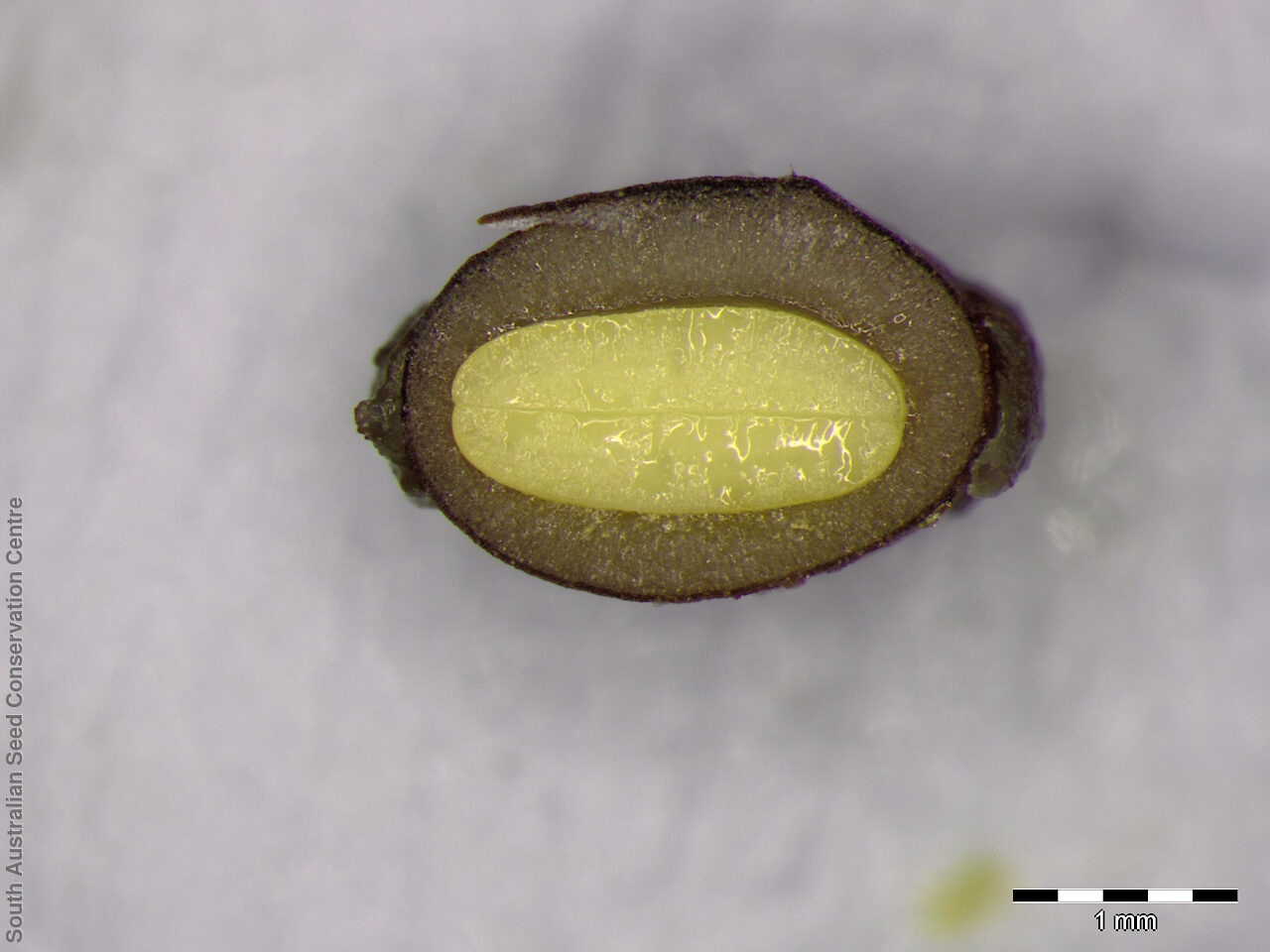

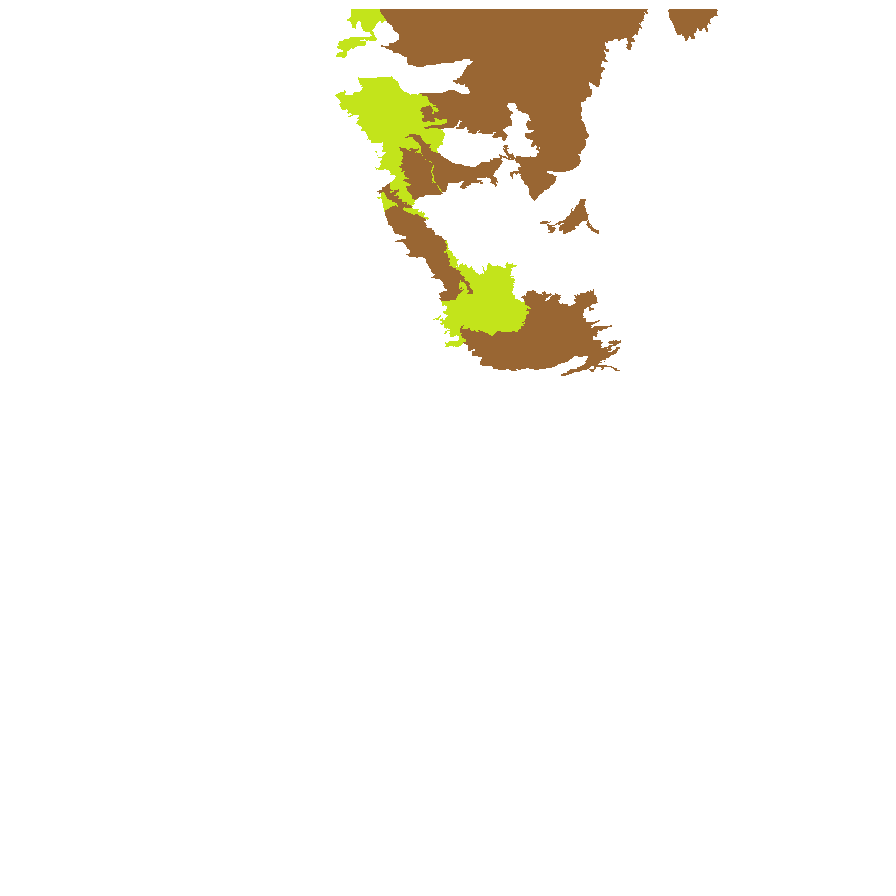
Botanical art
Prior names
Zygophyllum crassissimum
Etymology
Roepera (formally Zygophyllum which is from the Greek 'zygon' meaning pair and 'phyllon' meaning leaf; referring to the pair of leaflets making up each leaf) is named after Johannes August Christian Roeper (1801 -1885), a German botanist and physician. Crassissima means very fleshy; referring to the texture of the plant.
Distribution and status
Found in the north central part of South Australia, growing on gypseous flats and rocky rises. Also found in the Northern Territory. Native. Rare in South Australia. Rare in the Northern Territory.
Herbarium regions: North Western, Lake Eyre, Gairdner-Torrens
NRM regions: Alinytjara Wilurara, South Australian Arid Lands
AVH map: SA distribution map (external link)
Plant description
Erect perennial subshrub with a thick stem and thick spreading branches, to 60 cm high. Leaves very fleshy with leaflets very broad, obliquely obovate-cuneate, to 4 cm long, appearing continuous with a very short petiole, glaucous. Flowers orange with 4 sepals and 4 petals. Flowering between June and October. Fruits are yellow-brown broad-oblong, four segmented capsule with paper wings, each segment with 1-2 seeds. Seeds are dark brown to black, ovoid to 4 mm long and 2 mm wide with a long yellow aril on one edge. Seed embryo type is spatulate fully developed.
Seed collection and propagation
Collect seeds between October and December. Collect semi-dried and dried capsules by running your hands through the stems of the plant. Mature fruits will come off easily and will have a hard and dark seed inside each segment. Place the capsules in a tray and leave to dry for 1 to 2 weeks, depending on how green the fruit is. Then rub the dried capsules to dislodge the seeds. Use a sieve to remove the unwanted material. Store the seeds with a desiccant such as dried silica beads or dry rice, in an air tight container in a cool and dry place. Seed viability is usually high.
| Location | No. of seeds (weight grams) | Number of plants | Date collected | Collection number Collection location | Date stored | % Viability | Storage temperature |
|---|---|---|---|---|---|---|---|
| BGA MSB | 3,600 (25 g) 3,600 (25 g) | 100+ | 14-Dec-2010 | MJT298 Lake Eyre | 1-Jan-2012 | 95% | +5°C, -18°C |
| BGA | 10,000 (89.8 g) | 2-Nov-2013 | TST1189 Lake Eyre | 24-Mar-2015 | 100% | +5°C, -18°C |
Number of plants: This is the number of plants from which the seeds were collected.
Collection location: The Herbarium of South Australia's region name.
% Viability: Percentage of filled healthy seeds determined by a cut test or x-ray.